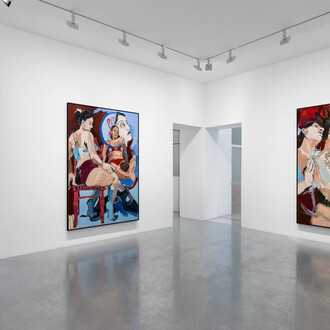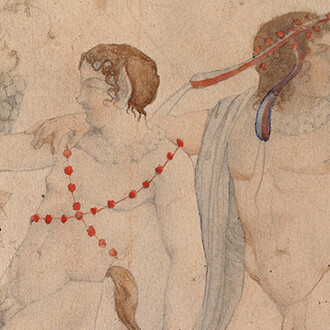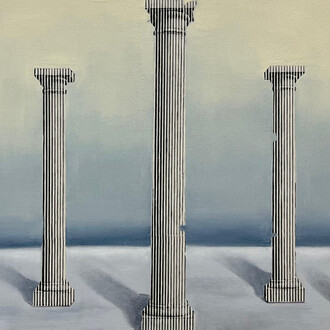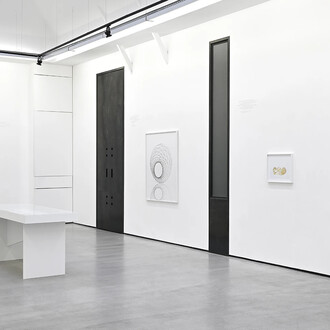Human things by Marianne Derrien.
“And with what body do they come?”—Then they do come —Rejoice! What Door—What Hour—Run—run—My Soul! Illuminate the House!
(Emily Dickinson)
Living with painting, and through it. For Nikki Maloof, art is a way to organize time, to inhabit it and to occupy spaces—a house, a garden, a studio. When the public and private spheres are interwoven with persistent tension and anxiety, painting allows her to capture the very essence of things and beings in order to acknowledge human distress.
With her exhibition Around the clock, Nikki Maloof explores the diversity and complexity of the material and perceptible world. Each domestic scene that she represents shows the depth of daily life and shares an intimate experience of her joys, hopes, or fears. Offering an original interpretation of the still life to reflect on the state of our world1, her audacious painting—combining beauty, mischief, and darkness—puts our relationship to the instability of life into perspective. While one thing contains so many others, everything that reconditions our connection to (re)productive time (work, parenting) participates in the emotional density of her artwork. There is a connection here to Emily Dickinson, who, isolated and reclusive in her family home in the Puritan austerity of 19th–century New England, described with astonishing modernity the chaos of her inner life and its sentimental, sometimes mystical, experiences. Her concise, elliptical poetry, which she described as “explosive and fitful”, allowed her to become a man, a woman, or an object.
Choosing to leave behind American urban life, Nikki Maloof lives in the countryside of western Massachusetts. In her recent paintings, she focuses on vital actions such as eating, washing, discussing, or sleeping. These recurring moments are part of the process of constructing our identity. “In the private sphere, away from the eyes of others, in close contact with desires, weakness, relationships of intimate power”2, the art of living frees itself3 from the social gaze, sketching a geography that is both personal and relational. If the house is a world unto itself, a bedroom, a bathroom, a dining room, a garden, or a kitchen become the spatial expressions of our consciousness.
These are interior and exterior landscapes where simple daily actions take place (The cut, Dinner discussion). Hands play an essential role, active and affectionate, and sometimes threatening. In Cosleep at dawn, the artist/mother and child hold each other in bed in a moment of shared affection. While the bedroom, a symbolic and carnal place, expresses the history of the body and its relationship to things4, this painting, with its pink and reddish colors, particularly evokes Couple in bed (1977) by Philip Guston, with its style recalling comics. Between pleasure and pain, “what shall I paint but the enigma?” Guston asked, evoking the darkest aspects of being.
Painting himself in bed with his wife posed like Brancusi’s Kiss, Guston represented a moment of great tenderness filled with darkness in order to emphasize the absurd nature of the human condition. In the same perspective, Nikki Maloof’s work is charged with psychological power, combining the personal and the political, humor and tragedy. Her painting expresses itself through this constant dialogue with other artists and rejects the limits of time by conveying multiple artistic references from past eras and today.
The omnipresence of plants, flowers, and insects and the arrangement of the interiors are in conversation with Italian and Flemish Renaissance painting, although Maloof’s work liberates itself from certain codes (The first supper, Other, Girlhood). These images also recall the symbolism of the vanitas, read as allegorical representations of the fleeting nature of our existence. With this current-day look at domesticity, Maloof distances herself from a strictly androcentric and anthropocentric vision. Blurring the boundaries between species and kingdoms through an overarching equality between ordinary things and beings, she constructs an oeuvre of attachment and detachment.
(Text by Marianne Derrien, art critic and independent curator)
Notes
1 Laurence Bertrand Dorléac, Les choses, une histoire de la nature morte, Musée du Louvre, Ed. Lineart, 2022.
2 Mona Chollet, Chez soi, une odyssée de l’espace domestique, Éditions La Découverte, 2015.
3 Ibid., p. 66.
4 Michelle Perrot, Chambre in Les choses, une histoire de la nature morte, Musée du Louvre, Ed. Lineart, 2022, p. 309.
















